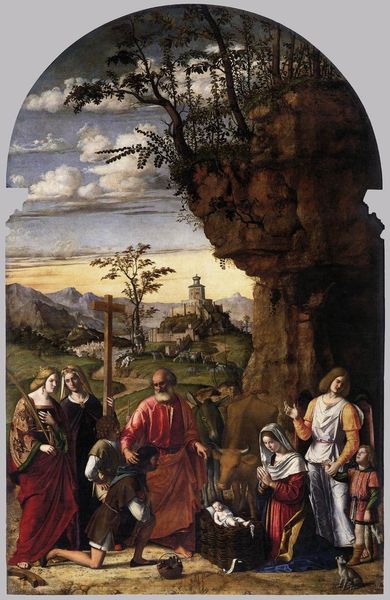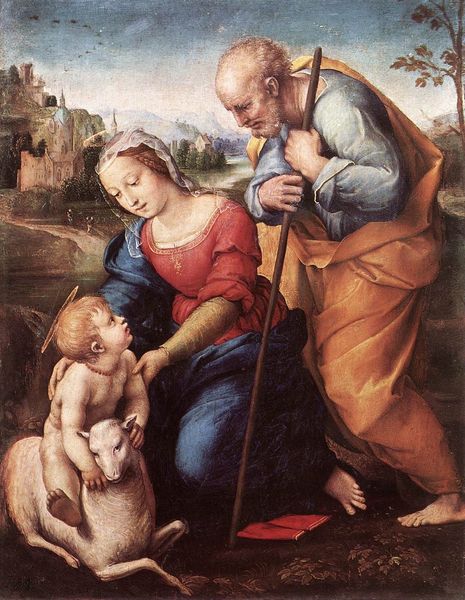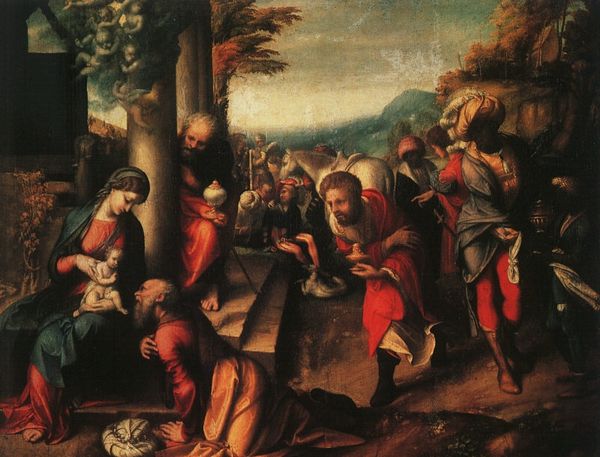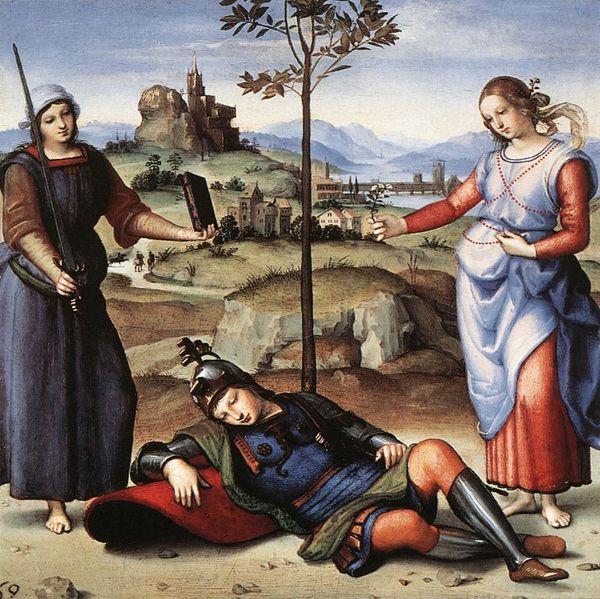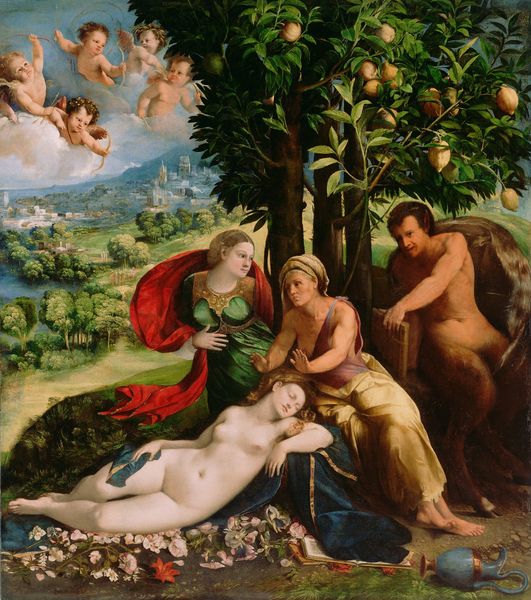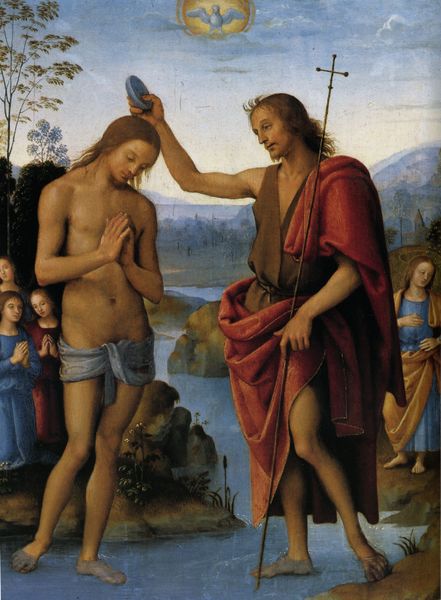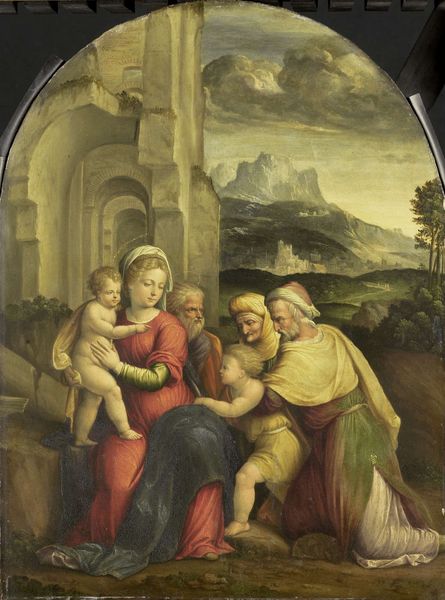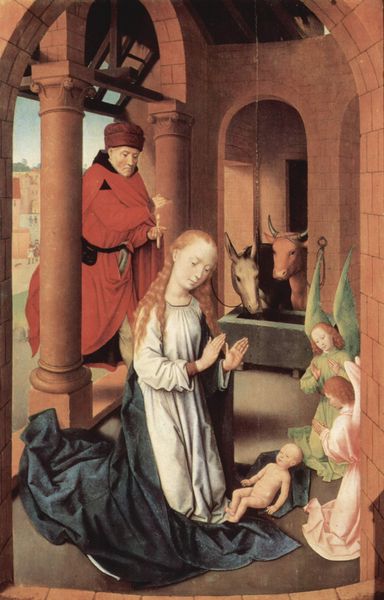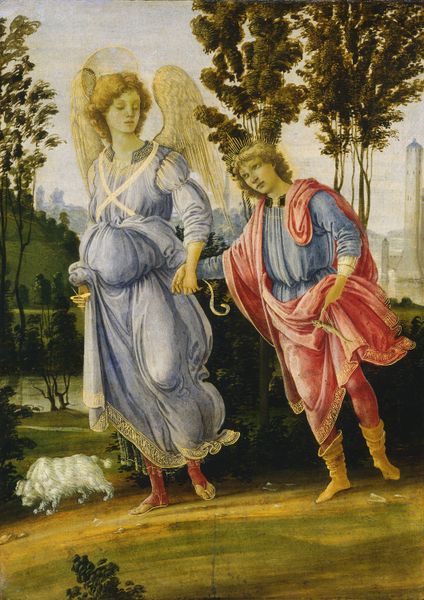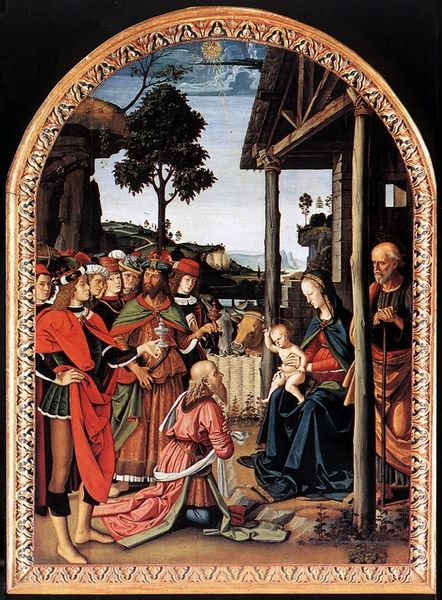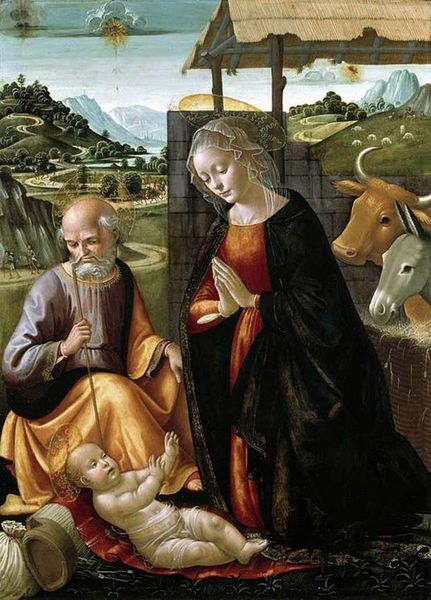
painting, oil-paint
#
portrait
#
painting
#
oil-paint
#
landscape
#
figuration
#
christianity
#
history-painting
#
italian-renaissance
#
christ
Dimensions: 139 x 211 cm
Copyright: Public domain
Curator: Here we have Cima da Conegliano's "Madonna of the Orange Tree with St. Ludovic of Toulouse and St. Jerome," painted around 1495. Editor: It’s strikingly tranquil. The figures seem posed almost in a theatrical sense against that expansive, detailed landscape. Curator: Precisely. Conegliano was known for embedding religious figures within serene natural settings. Think about how the setting here affects the viewers' interpretation of the sacred figures within the composition. It presents the church as serene. Editor: I am captivated by the texture he achieves. Notice the meticulous detail in the foliage, the subtle gradations in the sky, all contributing to this really grounded materiality of the whole piece. The tangible landscape and its contrast with idealized figures speak volumes to the consumption habits and access to commodities of this historical setting. Curator: That earthbound quality speaks to something larger; the growing artistic culture of the Veneto. Venetian painting saw itself as distinct during this period. Conegliano's skill highlights an art-market striving to distinguish themselves within the Italian Renaissance, right? Editor: Indeed. Oil paint played a crucial role; such layers and glazes build the luminescence which made it such a sought-after medium among patrons of the time, providing artists ways to depict their own world of consumption for those who could afford it. Curator: Let's not overlook the religious significance here. St. Jerome, known for his translation of the Bible, and St. Ludovic, with his regal attire—how do they function within the Catholic Church’s own project of imagery at the time? The saints themselves and their specific details also offer visual guidance to their viewers, of how a life in good standing of God should look and present itself. Editor: I am struck, yet again, with how those figures still contribute to a tangible composition with material grounding, despite their divine associations. Curator: Food for thought, as they say. It certainly prompts questions about the confluence of social history, devotional practices and artistic endeavor during the High Renaissance. Editor: An impressive demonstration of how artmaking’s materiality ties directly into socioeconomic context, all told.
Comments
No comments
Be the first to comment and join the conversation on the ultimate creative platform.
